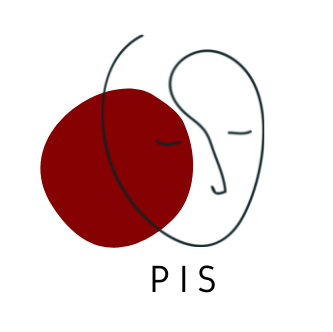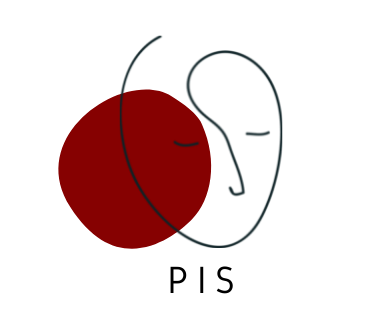The Return of Matter (second part)
Giovanna Colombetti (University of Exeter)
Varieties of Incorporation: beyond the Blind Man’s Cane
Martinetti Room – 28 February 2023, 17:00/19:00
Andrea Miller (Pennsylvania State University)
Sense-making through Simulation: Architectures and Aesthetics of the Cyber Ecosystem
Teams Virtual Room – 14 March 2023, 17:00/19:00
Maaike Bleeker (Utrecht University)
More-than-human Labor in Making the Universe Matter
Martinetti Room – 28 March 2023, 17:00/19:00
Otto von Busch (New School Parsons)
Making Matter in Making Matter
Teams Virtual Room – 18 April 2023, 17:00/19:00
Alva Noë (UC Berkeley)
Strange Tools
Room 113 – 16 May 2023, 17:00/19:00
Luca Pagan (Independent Researcher)
Body Architecture for Kinesthetic Memory
Martinetti Room – 4 July 2023, 15:00/17:00
Via Festa del Perdono, 7, 20122 Milan.
All meetings will be held in blended mode and can be followed through the link Teams: https://tinyurl.com/25f8p7yw
Varieties of Incorporation: beyond the Blind Man’s Cane
Giovanna Colombetti (University of Exeter)
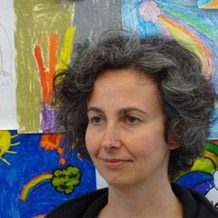
Abstract
In post-phenomenology and other disciplines, “incorporation” refers to the assimilation or integration of tools into the body. In Phenomenology of Perception, Merleau-Ponty had already discussed examples of tool-incorporation—including, famously, the example of the blind man and his cane. Merleau-Ponty’s analysis refers to what he called the “body schema”: our prereflective awareness of ourselves in terms of what we can do and perceive in the world. Subsequent discussions of incorporation have similarly focused on the integration of tools into the tacit (or even unconscious and sub-personal) sensorimotor body. In my talk I want to draw attention to the fact that we can incorporate tools in other ways as well, because we experience ourselves not just as tacit sensorimotor bodies. First, we can also incorporate tools into the so-called “body image”—the experience of our body as an intentional object of awareness, which can itself be distinguished into various (sub)experiences. Second, we can incorporate tools into our “lived seen body”—our sense of how we appear to others. I will illustrate these distinctions with examples and empirical evidence, and conclude with some reflections about the relationship between experiences of incorporation and the much discussed notion of the “extended mind”.
Bio
Giovanna Colombetti is Professor of Philosophy in the Department of Social and Political sciences, Philosophy, and Anthropology of the University of Exeter (UK). At Exeter she is also member of EGENIS (The Centre for the Study of the Life Sciences), where she leads the Mind, Body, and Culture research cluster. Her interests lie at the intersection of philosophy of cognitive science (especially embodied and situated cognition), philosophy of emotion, phenomenology, and material culture studies. She is the author of several articles and chapters in these areas, and of the book The Feeling Body: Affective Science Meets the Enactive Mind (published by MIT Press in 2014). Since then, she has worked to develop the notion of “situated affectivity”, and is currently writing a second monograph on our affective relation to material objects.
Sense-making through Simulation: Architectures and Aesthetics of the Cyber Ecosystem
Andrea Miller (Pennsylvania State University)
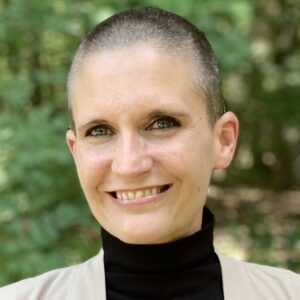
Abstract
Spurred by the 2020 relocation of US Army Cyber Command to Fort Gordon, Georgia, the $100 million Georgia Cyber Center is the largest state-sponsored US cybersecurity center to date. An expansive collaboration between government, higher education, and the tech industry, the campus aims to bridge workforce development gaps in cybersecurity and usher in a new period of regional economic prosperity for the surrounding city of Augusta. This presentation draws from ethnographic research surrounding the grand opening of the Georgia Cyber Center’s Shaffer MacCartney Building in January 2019 to analyze how what my interlocutors term the “cyber ecosystem” coheres through architectural and aesthetic simulations that together work through taxonomizing logics of race, threat, and inclusion. Within the Georgia Cyber Center, simulations comprise the performative and imaginative infrastructures for the liberal US security state, where principles of fun, interactivity, inclusivity, and flow simultaneously conceal and animate the military and police applications of the cybersecurity center and its digital wargames. Charting the embedded logics of cybernetic ecology that pervade contemporary cybersecurity practices and forms, I argue that the simulation of a coherent cyber ecosystem tending toward homeostasis belies competing technoscientific and political sensibilities that shape its conditions of emergence.
Bio
Andrea Miller is Assistant Professor of Telecommunications and Women’s, Gender, and Sexuality Studies at Penn State University. In their research and teaching, they draw from transnational and postcolonial feminist studies, science and technology studies, and cultural studies to consider how technology, security, and empire shape sensibilities of race and gender. Their work has examined the racialized and gendered logics of drone warfare and preemption, the criminalization of online speech acts, predictive policing and biometric surveillance technologies, and US counterterrorism policy. They are currently completing a book project that examines the cyber ecosystem as a sense-making concept for the US security state. Miller’s publications have appeared in journals such as Public Culture, Antipode, Gender, Place and Culture, and Small Wars & Insurgencies as well as various edited collections.
More-than-human Labor in Making the Universe Matter
Maaike Bleeker (Utrecht University)
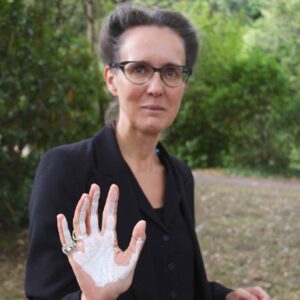
Abstract
This presentation will be a speculation on the potential of an upgrade and update, or perhaps I should say an actualization and radicalization of what John Tresch has described as a labor theory of knowledge: a theory of knowledge that acknowledges the labor of humans and that of instruments and machines as intrinsic elements of how things come to be known. In The Romantic Machine: Utopian Science and Technology after Napoleon (2012) Tresch locates the emergence of this theory in the early nineteenth century. He dedicates his book to Bruno Latour, Simon Schaffer and George Stocking and indeed from the perspective of late twentieth and early twenty-first century developments, this forgotten minor history gains new actuality in relation to, among others, Schaffer’s attention to the mutual implication of scientific and social thought, Latour’s focus on the relationship between human and non-human actors in “meshworks” of interaction, and also, I would add, Karen Barad’s understanding of knowing as a material and distributed practice in which humans participate in larger material configurations. In my presentation, I will read Tresch account of French astronomer Francois Arago (1786-1853) in tandem with Barad’s account of human-technology intra-actions (in her Meeting the Universe Halfway) as well as with insights from contemporary media theory (by Mark Hansen, John Durham Peters and others) to explore resonances between their insights and how these open new perspectives on the more-than-human labor involved in how the universe comes to matter.
Bio
Maaike Bleeker is a professor in the Department of Media and Culture Studies at Utrecht University where she also serves as Director of Research of the Institute for Cultural Inquiry (ICON). Her work engages with questions of perception, cognition and agency from an interdisciplinary perspective, with a special interest in materiality, embodiment, movement, and technology. She is principal investigator of Acting Like a Robot: Theatre as Testbed for the Robot Revolution (funded by the Dutch Organization for Scientific Research NWO, https://performingrobots.sites.uu.nl/ ) and editor of (among others) Anatomy Live: Performance and the Operating Theatre (Amsterdam University Press). Her most recent book Doing Dramaturgy. Thinking Through Practice (2023) just appeared with Palgrave.
Making matter in making matter
Otto von Busch (Parsons School of Design, New York)
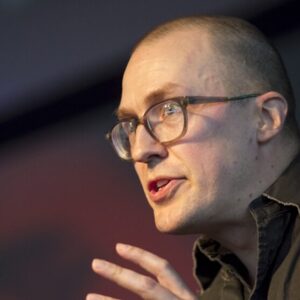
Abstract
Why is it so hard to materialize the material turn? What are practitioners to do with the new theoretical tools that have become available to unpack the power of design? These open questions capture some of the confusion designers may ponder when the attention is drawn to their field. In this talk, Otto von Busch will unpack. some of main thoughts behind the book Making Trouble: Design and Material Activism, to explore how making practices “hack into reality” and come to challenge discursive, legal, and physical arrangements of power.
Bio
Otto von Busch is Professor of Integrated Design at Parsons School of Design and holds a Ph.D. in design from the School of Design and Craft at the University of Gothenburg, Sweden. He has a background in arts, craft, design, and theory, and many of his projects and publications explore how making practices, and especially fashion, can mobilize community capabilities through collaborative craft and social activism. His latest publications include The Psychopolitics of Fashion: Conflict and Courage Under the Current State of Fashion, (Bloomsbury 2020) and Making Trouble: Design and Material Activism (Bloomsbury 2022).
Strange Tools
Alva Noë (UC Berkeley)
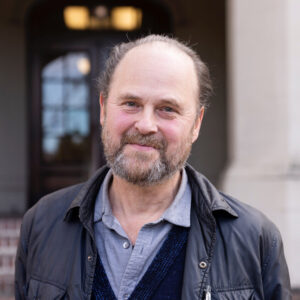
Abstract
What is art? Why does it matter to us? What does the fact that it matters to us as much as it does tell us about ourselves? In this talk, the author of Strani Strumenti (Strange Tools) argues art is a reorganizational practice, one that it is necessarily emancipatory and renewing.
Bio
Alva Noë is a writer and philosopher living in Berkeley and New York. He is the author of Action in Perception (MIT 2004), Out of Our Heads: Why You Are Not Your Brain and Other Lessons from the Biology of Consciousness (FSG 2009), Varieties of Presence (Harvard 2012), Strange Tools: Art and Human Nature (FSG, 2015), Infinite Baseball: Notes from a Philosopher at the Ballpark (OUP 2019) and Learning To Look: Dispatches from the Art World (Oxford 2022). His newest book The Entanglement: How Art and Philosophy Make Us What We Are (Princeton) will be published in June 2023. He is a Professor of Philosophy at the University of California, Berkeley, where he is also a member of the Center for New Media and the Institute for Cognitive and Brain Sciences. Noë is a 2012 recipient of a Guggenheim Fellowship and a 2018 recipient of the Judd Hume Prize in Advanced Visual Studies. He is currently an Einstein Visiting Fellow at the Free University in Berlin.
Body Architecture for Kinesthetic Memory
Luca Pagan (Independent Researcher)
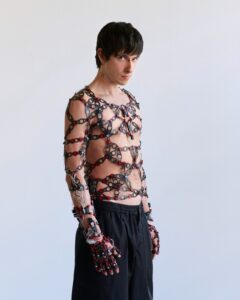
Abstract
Body architecture for kinesthetic memory is an intervention designed to reflect on the artistic practice of redesigning the human body by means of technology in order to explore the possibilities for sound to act as a language through the perception of body movement. With the use of body motion sensing sensors, wearable technology design, and machine learning algorithms, devices and the perception of our bodies merge, blurring the boundary between what is human and what is artificial.
Bio
Luca Pagan (1993, Venice) is a sound artist, performer and independent researcher. His research focuses on the union between human beings and new technologies in order to investigate the expressive and communicative value of music. His performances explore the relationship between physical movement, sound and environment. His approach is based on the self-design of wearable technologies and the use of biotechnology to capture the expressiveness of performance with a focus on machine learning techniques. He has collaborated with artists such as MAEID Studio, LOREM, Artificial Humanism, and Giorgio Sancristoforo. His work has been exhibited at the Biennale di Architettura (Venice), Iklectik Art Lab (London), Museo MAXXI (Rome), Fundación Princesa de Asturias (Oviedo), JRC Joint Research Center (Ispra), PARC Performing Arts Research Center (Florence), Transmedia Research Institute (Fano), Fondazione A.Pini (Milan), Zone Digitali Festival (Bergamo), Cosmo (Venice), Milano Fashion Week (Milan). Currently in artist residency with Federica Sasso at Casa degli Artisti (Milan).
